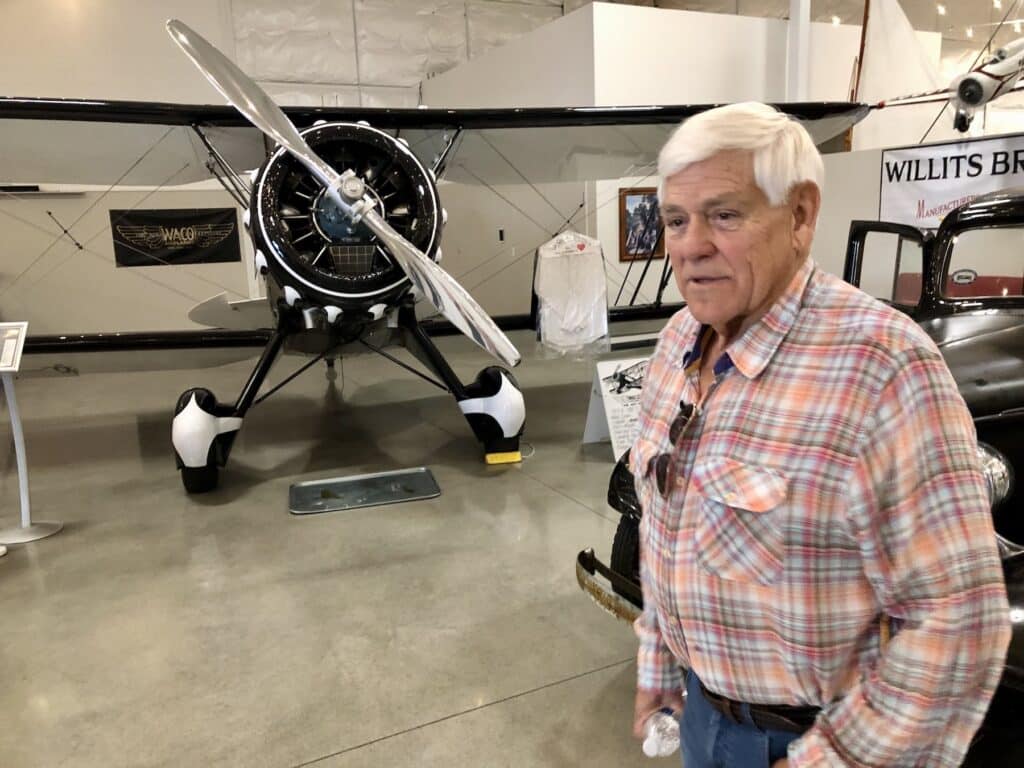Arts & Entertainment Business Community
Antique plane museum takes flight at Narrows Airport
Seventeen-year-old Bob Juranich made his first solo flight on Feb. 13, 1965, in Bonner Springs, Kan. In 1988, he tracked down and bought the 1946 J-3 Piper Cub he had piloted.
“No two parts were put together,” said Juranich, 75. “There was a frame and everything else was disassembled and in boxes and in a basement. It had no engine.”
First plane from Bob’s first solo
Bob, brother Bill and aircraft mechanic Bob Johnson pieced it back together. Now restored, the iconic yellow plane with the black lightning bolts poses with about a dozen other antique aircraft at the Juranich’s Gig Harbor Vintage Aero Museum at Tacoma Narrows Airport.
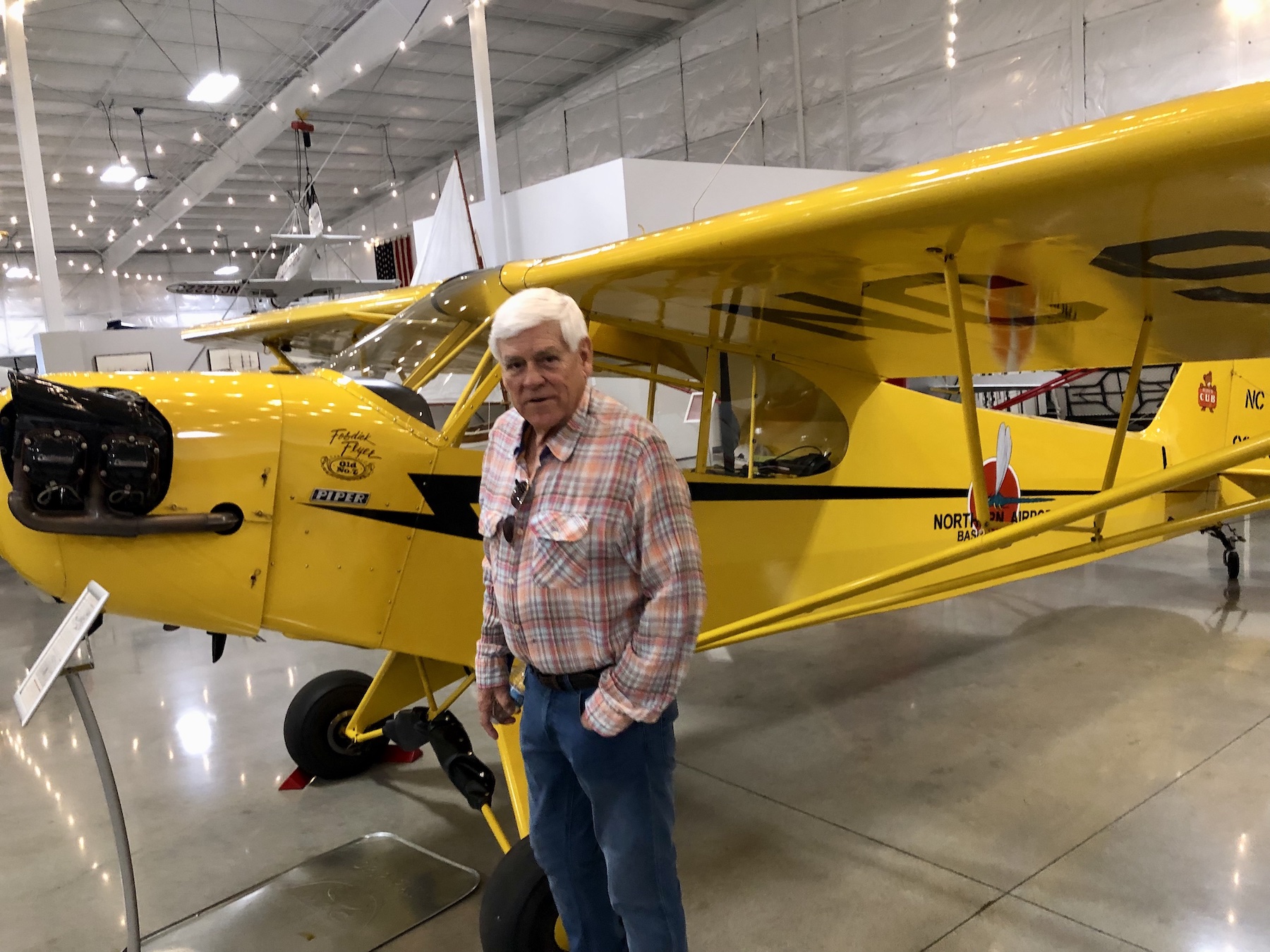
Bob Juranich stands beside the 1946 J-3 Piper Cub he soloed in in 1965. He hunted it down in 1988 and pieced the boxed parts back together.
The iconic J-3— the first model created by Piper Aircraft Company — bears an insignia from Northern Airport in Basehor, Kan. The Juraniches’ father, Joe, owned the grass strip where farmers kept their planes in 13 shack-style hangars.
The brothers grew up there and learned to fly as teens. Bill, two years Bob’s junior, bought his first plane at 18 — a 1946 Taylorcraft.
Dad’s plane displayed at museum
The 1946 Piper Super Cruiser Dad purchased in 1964 remained in the family and also is displayed at the museum. The boys not only inherited the plane but the love of civilian, grassroots aircraft from their father, who founded the Kansas City chapter of the Antique Airplane Association.
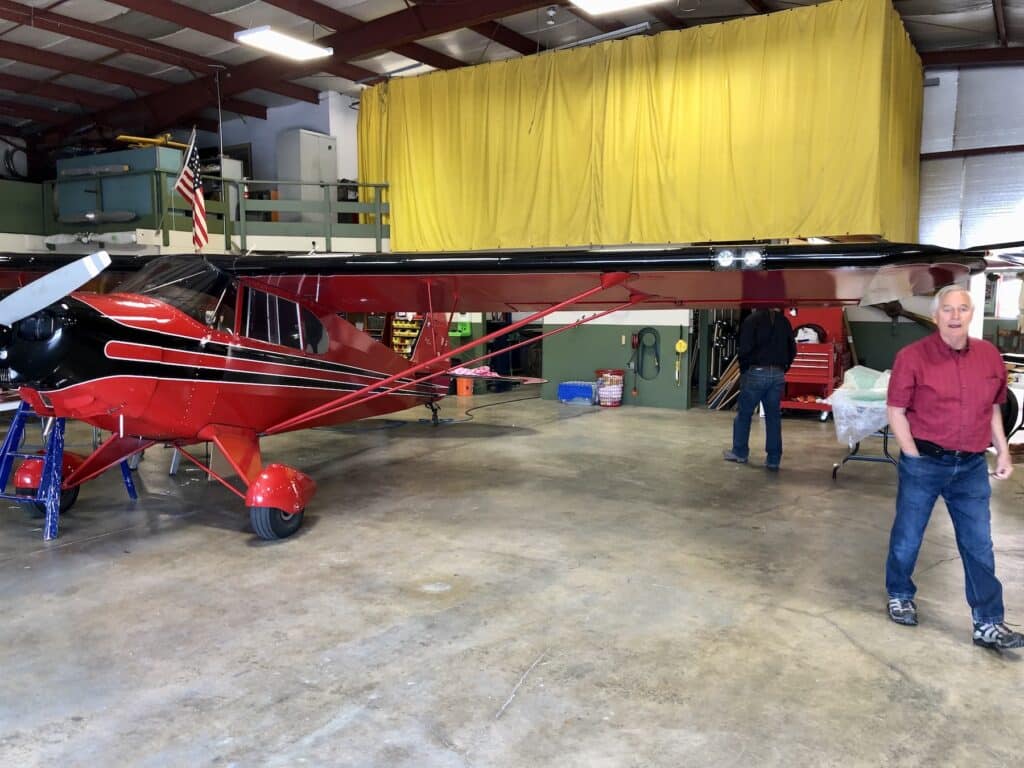
Bill Juranich, right, now owns the 1946 Piper Super Cruiser his father purchased in 1964 and often commutes 14 minutes to the museum from his home in Covington. It is undergoing wing repair in the shop.
Bob, who moved to the Northwest in 1975, has been flying since 1980 out of Tacoma Narrows Airport, where he met Tosch Aircraft mechanic Johnson. Bob Juranich bought Tosch when the owner retired, and hired Johnson after recognizing his talents in repairing and restoring antique airplanes.
County provided encouragement
“We were just building airplanes,” Bob Juranich said. “The Pierce County economic development people encouraged us to have a museum. I always wanted to. Bob Johnson was cranking out airplanes, so we had to do something.”
They opened the 12,400-square-foot museum/event venue as Point Fosdick Antique Airplane Hangar with little fanfare, or advertising, in September 2018. It was recently renamed for better familiarity.
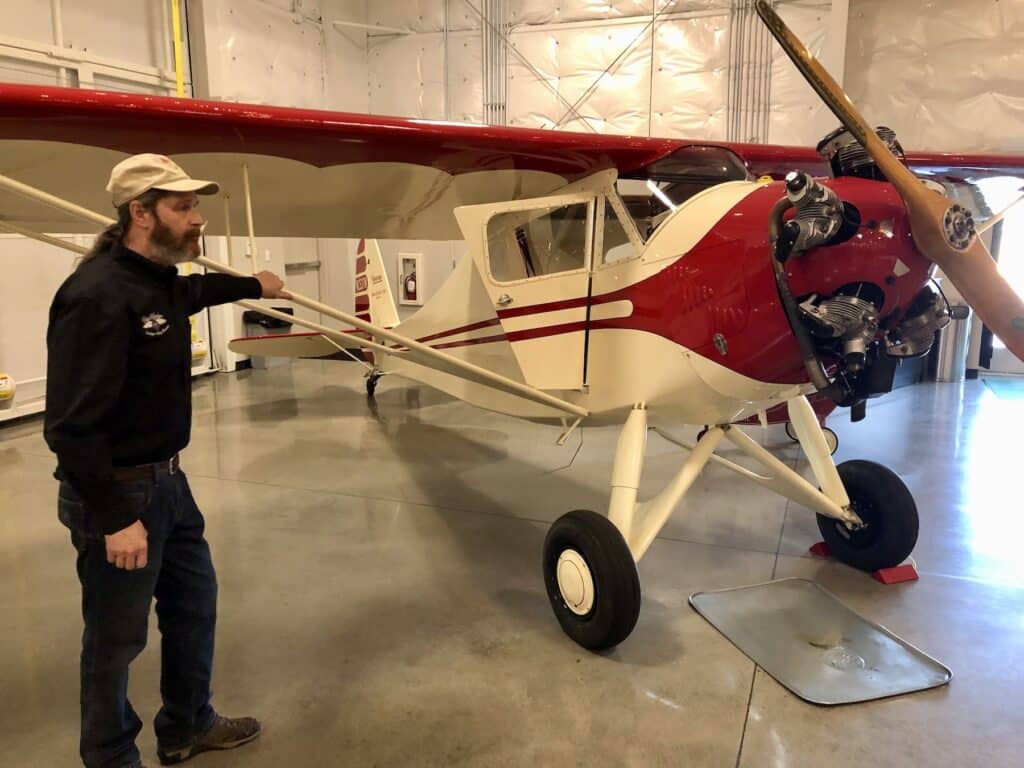
Bob Johnson, the primary renovator, talks about the museum’s latest addition, a 1930 Monocoupe 90. It hadn’t flown since 1940 and was a pile of parts sitting in a hangar in Auburn.
“We found the community likes having a space like this,” Bob Juranich said. “Right away we were doing a lot of Christmas parties and weddings. We were doing just fine, chugging along.”
Closed for two years
Then the COVID pandemic struck. The doors were locked for two years. In February, the museum hired Brandon Baimbridge as executive director, and reopened on March 1.
“We decided to go full speed ahead, with the encouragement of the community,” Bob Juranich said.
Unique events venue
The facility boasts 20-foot ceilings and highly polished concrete floors. Large hangar doors can be opened to allow guests to watch aircraft take off and land. The venue can accommodate large or small groups, with or without the planes. Free private tours are available by appointment.
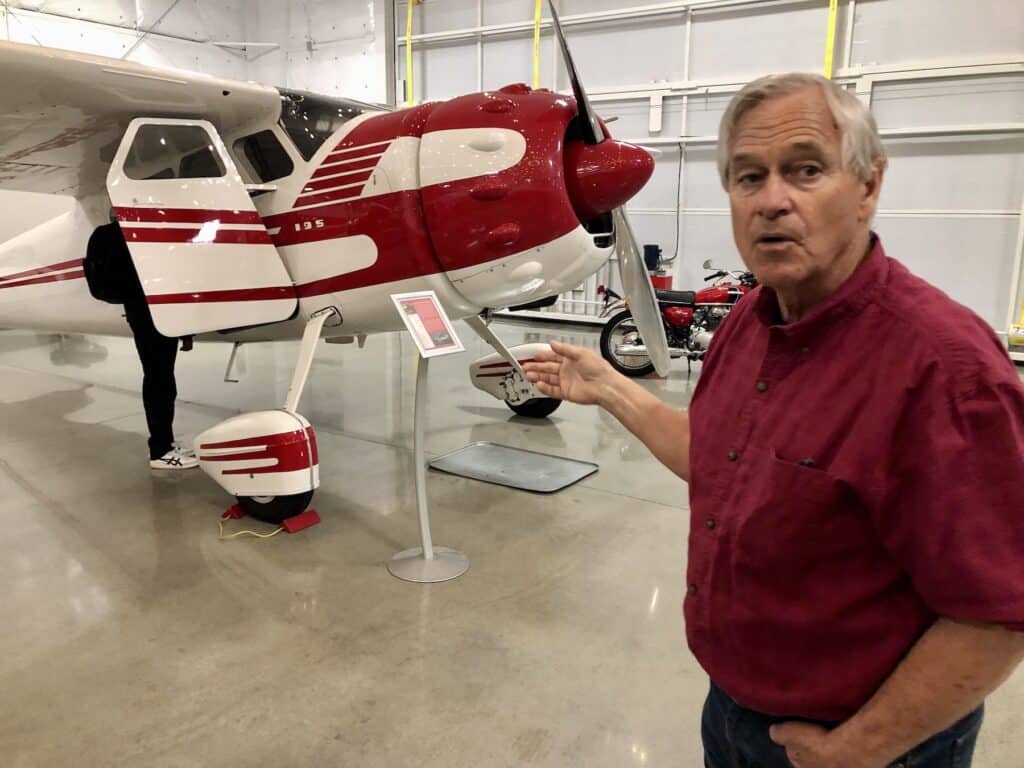
Bill Juranich with the 1953 Cessna 195, the Lear jet of its time. The plush four-seater is the most modern plane in the collection.
“We view this as being a window to the airport, to aviation, for Gig Harbor and the community,” Bob Juranich said. “There are not many places where families can come to the airport and get a hands-on experience.”
Planes date from 1929 to 1953
The museum’s aircraft range from a 1929 open-cockpit biplane — the Command Aire 5C3 — to the plush 1953 Cessna 150, the Lear jet of its time. The two-seat Command Aire was used primarily for crop dusting because of its slow speed and excellent handling. The four-passenger Cessna 150 could cruise at 170 mph, nearly the speed of a contemporary DC-3 airliner.
Antique aircraft seem to find their own way into the museum.
“We don’t look for airplanes, they look for us,” Bob Juranich said. “The last half dozen we didn’t even know were around. We didn’t want them to get thrown in the trash, so we rescued them.”
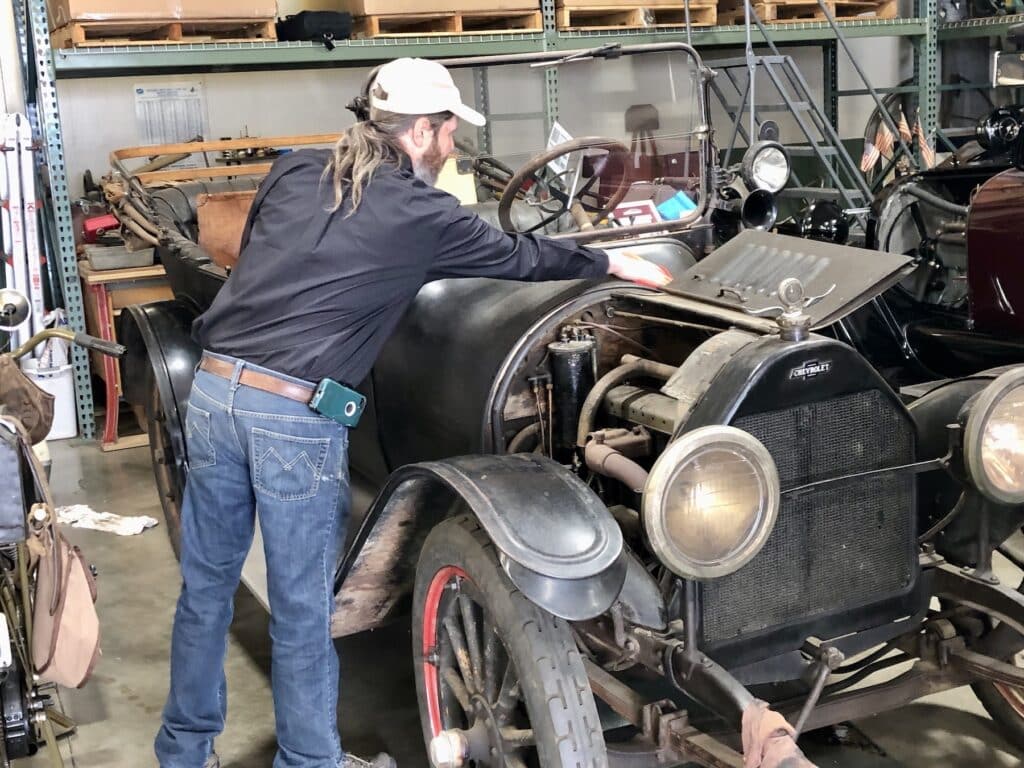
Aviation mechanic Bob Johnson wipes dust from his 1916 Chevrolet. He likes restoring cars as much as planes (“Anything old,” he says), and has a handful at museum. This one, however, is all original.
“These guys will find something, put in the effort few people will and share them with the community,” added Baimbridge, who served 20 years in the Air Force as an aircraft mechanic and now owns consulting firm AV8RS, LLC at the airport. “These brothers are proud to show them off, share them and tour the country with them.”
They can all fly
Johnson, who has 45 years in aviation work, restores the planes to appear just as they were built. And, unlike many antique aircraft, they can fly. Bob and Bill pilot them around the area and to airshows across the country.
“We all make an effort to keep them flying,” Bob Juranich said. “This is not a dead hangar. These are live airplanes that fly.”
It’s not scary to take one up for the first time because “we feel like we’ve touched every piece and it’s as perfect as it can be.”
“The planes are run through the wringer before they even think about getting in the air,” added Baimbridge, 41. They undergo high-speed taxiing, extensive engine testing and an FAA air worthiness inspection, he said.
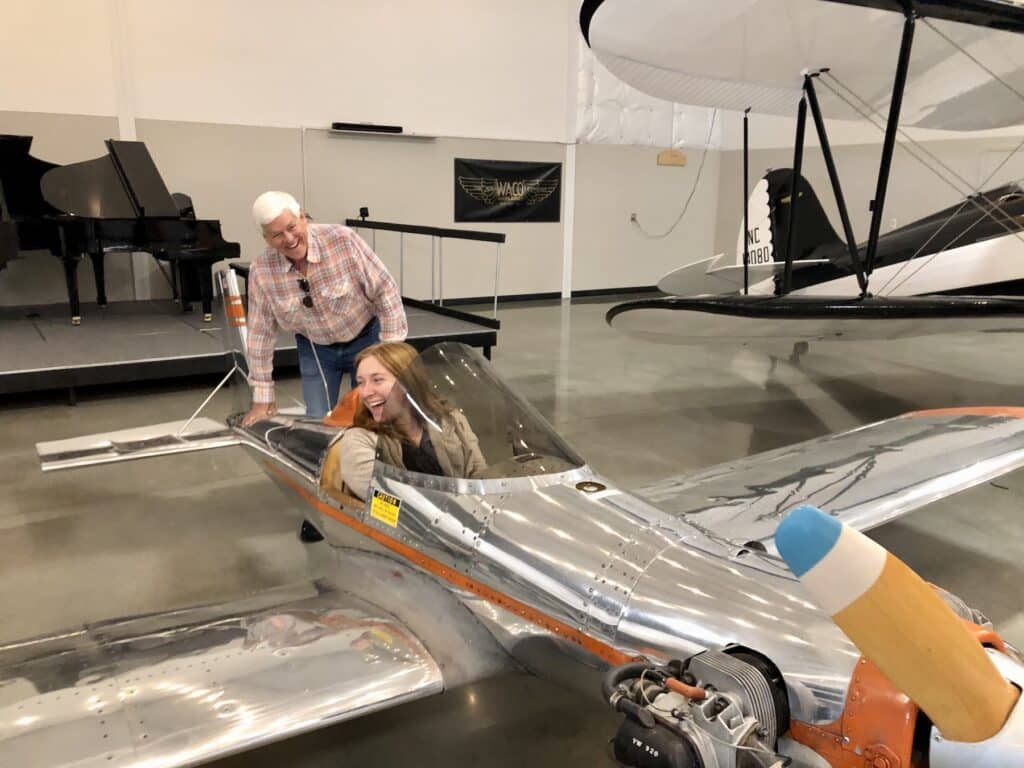
Bob Juranich creates fake turbulence for Brittney Schuler in the lightweight Watson Windwagon, which is powered by half a Volkswagen engine.
Bob Juranich’s favorite museum plane is the 1934 Waco YMF-5, the pinnacle of biplane design.
The Maserati of biplanes
“It’s just a Maserati,” said Bob Juranich. “Not commercial, not transportation, just for fun by very wealthy people.”
Bob Juranich cruises at 125 mph in the shiny black-and-white, open-cockpit two-seater that was owned by the Standard Oil Brewster family and the DuPonts. They were only built to order. Just 13 of this model were produced. Three remain.
The Waco crashed in 1943 while in service with the Civilian Pilot Training Program. Several owners had it until Bob Juranich bought it in 2006.
“We just made friends and it fit like an old shoe,” Bob Juranich said. “I just like the looks of it.”
Bill favors his dad’s old Piper Super Cruiser and often makes the 14-minute commute in it between his Covington home and the museum.
“It’s easy to fly. I just have fun flying it,” he said.
Jayce Krag, a detailer and handyman, rounds out the museum crew.
An Airport Day is tentatively scheduled for Aug. 12 at Tacoma Narrows. Whether it comes to fruition, the museum will still host an open house and aviation swap meet that day, Baimbridge said.


